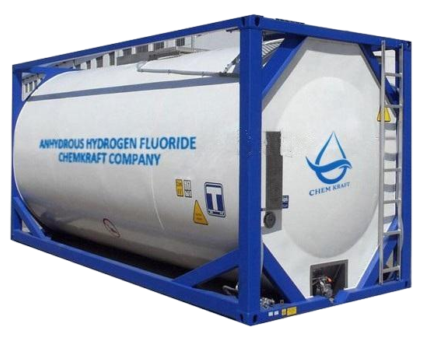Definition
Handling and shipment safety for anhydrous hydrogen fluoride (AHF) is of utmost importance due to its hazardous nature and potential risks to human health and the environment. AHF is a highly corrosive, colorless liquid that can cause severe burns and is toxic when inhaled or ingested. It is crucial to follow strict guidelines and safety measures during the handling and transportation of AHF to minimize the potential for accidents and ensure the safe storage, use, and distribution of this chemical.
First step
The first step in ensuring the safety of AHF is proper handling procedures. AHF should only be handled by trained personnel who are equipped with the necessary personal protective equipment (PPE), such as goggles, gloves, and chemical-resistant aprons. It is essential to avoid direct contact with the skin or eyes and to prevent inhalation of AHF fumes. Proper ventilation is also crucial to minimize the concentration of airborne AHF, especially in enclosed spaces.
When storing AHF, it is important to use dedicated storage facilities that meet specific safety guidelines. AHF should be stored in containers made of materials resistant to its corrosive effects, such as stainless steel or Teflon. Containers should be tightly sealed and stored in well-ventilated areas away from ignition sources and incompatible substances. It is advisable to have secondary containment systems in place to prevent spills or leaks from reaching the environment.
Transportation of AHF requires special attention to safety measures. AHF containers should be labeled properly with the UN number and hazardous class to ensure that emergency responders can quickly identify and respond to any accidents. Transportation vehicles should be designed to withstand the potential hazards associated with AHF, such as its corrosiveness and the potential for leaks or accidents. Adequate securing of containers during transportation is necessary to prevent them from tipping or falling over.
Emergency preparedness
Emergency preparedness is vital in handling AHF safely. Procedures should be in place to promptly respond to leaks, spills, or accidents. Designate an emergency response team trained in AHF handling and have appropriate response equipment readily available, such as neutralizing agents and decontamination supplies. Establish communication protocols with local emergency responders to ensure a coordinated response in case of emergencies.
Regular inspection and maintenance of AHF containers are essential to identify and address any potential issues that may compromise safety. Containers should be inspected for signs of corrosion, leaks, or damage, and any necessary repairs or replacements should be carried out promptly. Regular training and refresher courses should be provided to employees involved in the handling and transportation of AHF to ensure they stay updated with the latest safety procedures and guidelines.
Final word
In conclusion, handling and shipment safety for anhydrous hydrogen fluoride demands strict adherence to guidelines and safety measures. Proper handling procedures, appropriate storage facilities, secure transportation, emergency preparedness, regular inspection, and maintenance are vital in mitigating the risks associated with AHF. Following these safety practices not only ensures the well-being of personnel involved but also minimizes the potential hazards to the environment and surrounding communities. The responsible handling and shipment of AHF is essential to prevent accidents, protect human health, and maintain a safe working environment.



